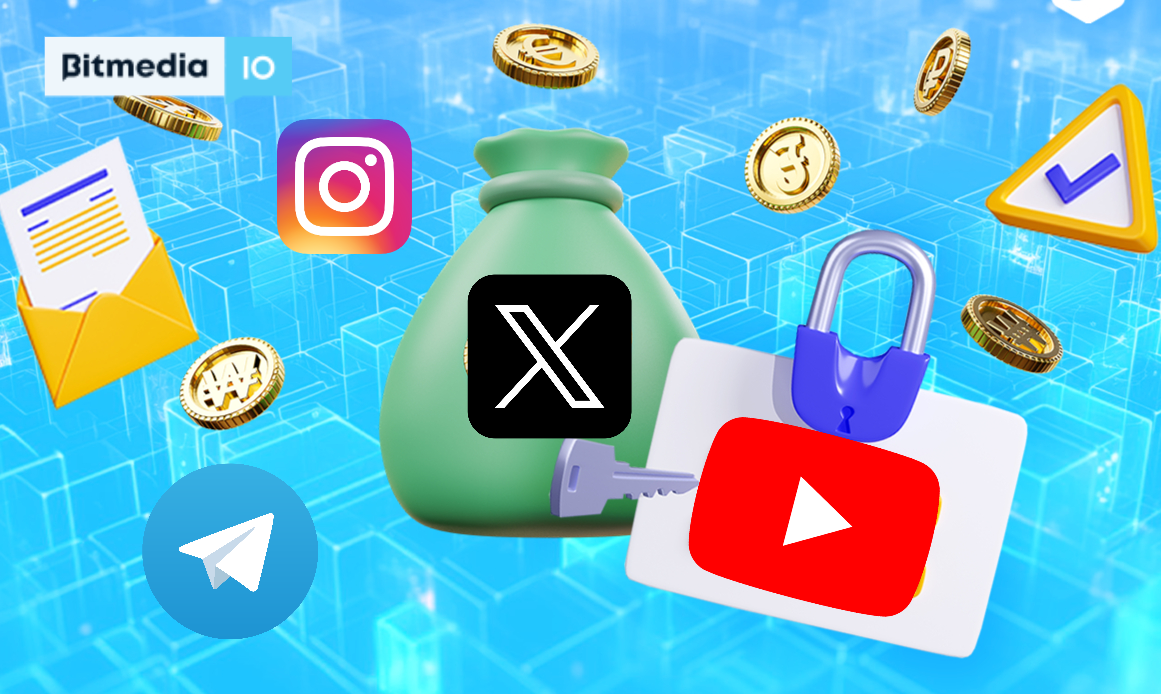How to Vet Crypto Influencers on YouTube and X Before Paying

You scroll through X (formerly Twitter) and see a crypto project you’ve never heard of suddenly trending. The name’s plastered across your feed, a dozen influencers are shilling it like it’s the next Ethereum, and the community’s buzzing. A few days later, the hype vanishes, and so does the project’s liquidity. Sound familiar?
In crypto, visibility is everything. Today, YouTube and X are where narratives are born, where token charts live and die by influencers` words. For brands, this opens up massive opportunities, but also enormous risks. A well-chosen influencer can generate serious FOMO. If you pick the wrong one, you will not only waste your budget but also risk your reputation.
Crypto influencer marketing is not just a trend. It’s a cornerstone of modern Web3 promotion. The challenge is to reveal who’s real and who’s just excellent at faking it.
What is Crypto Influencer Marketing?
Let’s not overcomplicate it. At its core, crypto influencer marketing is when blockchain brands partner with individuals who’ve built an audience in the crypto space, usually on platforms like YouTube, X, or Telegram, to spread the word about their token, protocol, NFT drop, or event.
These aren’t just random creators, they’re voices that people trust with one thing in common: they’re directing sentiment.
Unlike traditional influencer marketing, where content might revolve around beauty, fashion, or lifestyle, influencer marketing crypto lives in a faster, more volatile ecosystem. Trends form overnight. Projects moon or crash before you finish your roadmap.
70% of customers prefer influencer recommendations over traditional marketing, as per Matter Communications – PR, Creative & Digital Marketing Agency.
“Collaborating with the right influencers is the difference between a good campaign and a great campaign,” said Mandy Mladenoff, President of Matter.
And while a crypto influencer marketing agency can help manage relationships, brands still need to know how to spot quality from fluff.
Why Vetting Crypto Influencers is Important
To be blunt, the crypto space is fertile ground for influencer fraud. There are YouTube channels with 100K subscribers that average 500 views per video. X accounts with 250K followers that barely get five likes. Bots, engagement pods, click farms – it’s all out there.
Even worse, some Key Opinion Leaders (KOL) crypto figures have promoted outright scams, knowingly or not. Projects rug, the influencers walk away with their fee, while communities are left holding the bag. That’s a bad partnership and brand damage you may not recover from.
In 2021, Logan Paul, one of the biggest social media influencers in the world with 23M followers on YouTube, promoted a project called CryptoZoo, promising a play-to-earn game where users could earn passive income from breeding digital animals. Millions poured in from fans and crypto users alike. But the project never launched, developers weren’t paid, and investors were left in the dark. Logan walked away with promotion profits, while the community suffered losses, many in the tens of thousands.
You’re not just hiring someone to make noise. You’re investing in someone who can reach, influence, and convert the right audience. Vetting isn’t just due diligence. It’s your only line of defense. And if that person’s audience isn’t legit? Or if their values clash with your brand’s ethics? That campaign can backfire hard.
So, before you lock in a budget or sign a deal, let’s talk about what to actually look for.
How to Evaluate Crypto Influencers on YouTube
YouTube remains one of the strongest channels for long-form content and deep-dive explainers. But not all crypto creators are equal. Here’s how to approach your evaluation.
Engagement Over Metrics
Forget about subscriber count. A channel with 20K subscribers but consistent 10K views per video often delivers more real value than a channel with 200K subs.
Look at:
- Average views per video over the last 90 days
- Like-to-view ratios
- Comment quality (Are people asking questions? Debating? Or is it “Great video bro” repeated 100 times?)
Audience Demographics
Does their audience align with yours? A crypto mining startup probably doesn’t need views from a 90% retail meme coin crowd. If you’re pushing DeFi tooling or institutional solutions, the influencer’s audience needs to match.
Some creators are transparent and share demographic breakdowns on request. If they don’t — it’s a red flag.
Consistency of Content
Check the upload timeline. Has the creator been consistent for months? Or did they suddenly start dropping daily videos about the latest trending altcoin?
A sudden spike in activity (especially about low-cap tokens) can be a sign of pay-for-play behavior common in the KOL market, where influencers are bombarded with promo requests.
Disclosure Transparency
Make sure the influencer is honest about paid promotions. Look for #ad tags, pinned comments with disclosures, or verbal clarifications.
Failure to disclose is even illegal in some jurisdictions. And if your brand’s name gets tangled in that mess, it’s your reputation on the line.
How to Evaluate Crypto Influencers on X
Now, X is a different beast – fast, emotional, and meme-driven. But it’s also one of the best places for viral exposure, if you partner with the right voice.
Follower Count vs. Engagement Quality
Again, don’t be seduced by big numbers. A profile with 150K followers might only get a few dozen likes. That’s a red flag.
Focus on:
Ratio of likes/retweets to followers.
Replies from real users (Are they thought leaders or just other small accounts?).
Whether their tweets generate discussion or just echo chambers.
One good test is how their audience responds when they tweet about lesser-known tokens. Do people dig in, or does it fall flat?
Tone and Alignment
This one’s easy to miss. Some crypto influencers on X are outright toxic, for example, spreading FUD, attacking competitors, or pushing shady narratives. Others are purely hype merchants, jumping from one pump to another.
If that’s not your brand’s style, keep scrolling. You need someone whose tone and ethics match your own.
Content Variety
Influencers who mix memes, analysis, community updates, and AMAs tend to have deeper engagement than those who just repost charts or shoutouts.
Check their last 30 tweets. Are they offering value, educating and entertaining? Or dumping out content for the algorithm?
Key Red Flags to Look For
Not every red flag means instant disqualification. But when several start stacking up, walk away. Here’s what to keep an eye on:
- Inconsistent audience metrics: One video gets 80K views, the next four barely hit 1K. That’s either bought traffic or artificial promotion.
- Zero engagement in comments: Real communities talk back when bots don’t ask follow-ups. If nobody’s asking questions, challenging ideas, or sharing their own takes it’s likely fake.
- Repetitive promotional behavior: If an influencer posts back-to-back endorsements of new tokens every day, you’re not working with a thought leader. You’re buying an ad slot, and probably not a great one.
- Lack of transparency: No disclosures, no context, no receipts. That’s a problem. Ethical creators are upfront about partnerships.
- Low-quality audience: Scan their followers. In case they mostly have empty accounts, zero-post profiles, or generic crypto spam, then the influencer’s reach is only noise.
- Too many deleted tweets or videos: Some influencers regularly delete posts after promos flop. That kind of revisionism is bad news, because it means they don’t stand by what they shill.
The influencer and KOL space in crypto is messy. But if you’re patient and critical, you can find real partners who move the needle without damaging trust.
How to Track ROI from Influencer Marketing
So you’ve launched a campaign, and how do you know if it worked? Measuring the impact of influencer marketing crypto isn’t as straightforward as checking how many likes a tweet got. You’ll need a multi-layered approach.
Start by defining success metrics. Determine your goal:
- Traffic
- Wallet signups
- Token trading volume
- Discord growth etc.
Once that’s locked:
- Use UTM links in every post or video description to track referral traffic.
- Offer promo codes or exclusive early access tied to each influencer.
- Monitor on-chain actions if your product involves wallets or DApps (this is where tools like Dune Analytics come in handy).
- Cross-reference spikes in user activity with your influencer content calendar
- Also, don’t underestimate brand sentiment. Track community chatter before, during, and after a campaign. Tools like LunarCrush or SproutSocial can help quantify shifts in perception.
- If you’re running multiple campaigns, compare them. Run controlled A/B tests with different KOLs or messaging styles. Crypto influencer marketing platforms can help automate this process at scale.
Without tracking ROI, you’re not doing marketing; you’re just spending.
Best Practices for Negotiating Deals with Crypto Influencers
Negotiating with a KOL influencer marketing partner is a bit like closing a seed round: fast-paced, informal, and usually DMs-first. But there’s still room for structure.
- Agree on deliverables, not price. One tweet, a thread, a YouTube mention, or a full review? Clear terms avoid disappointment.
- Use short-term test runs. Don’t commit to five videos upfront. Try one, analyze the results, and build trust gradually.
- Ask for insights. Top influencers can provide demographic data, watch-time metrics, or even click-through rates from previous campaigns.
- Protect both sides with a basic agreement. Even a simple contract in Notion or Google Docs covering timeline, payment terms, and disclosure is better than nothing.
- Pay in stablecoins unless otherwise agreed. Influencers don’t want to get paid in your token unless you’re already established. And even then, offer a stable option alongside it.
And don’t be afraid to walk away. If an influencer’s rate doesn’t match their value, or if they’re pushing pressure tactics like “I have five other clients waiting”, it’s probably not a healthy dynamic.
Influencer Marketing with Bitmedia
Сrypto influencer marketing moves fast, scams faster, and standing out is harder than ever. That’s where Bitmedia.io steps in.
We help Web3 projects get real visibility with integrated crypto influencer marketing solutions fitted to your campaign goals. We connect you with trusted KOLs that move markets.
Our crypto influencer marketing agency streamlines token launching, drives adoption for a protocol, builds long-term community engagement, and much more. We vet, manage, and optimize campaigns across X, Telegram, YouTube, and top-tier websites.
Conclusion
In crypto, trust is earned or lost in seconds. And while KOL ads might help you reach the right eyes, it’s the integrity of your partnerships that will determine what happens next.
Crypto audiences are savvier than ever. They spot paid promotions instantly, remember when influencers vanish after a rug, and talk.
So the question isn’t “Who has the most followers?” or even “Who’s the cheapest?” It’s: “Who would you trust to talk about your product if your name was on the line?”
FAQs
Who is the biggest crypto influencer?
The biggest crypto influencer depends on the metric. On YouTube, creators like Coin Bureau (2.6M) command massive reach. On X, voices like Cobie (805.4K), Ansem (742.8K, and Sisyphus (149K) lead the KOL crypto conversation.
Which platform is best for Crypto influencers?
It is impossible to say for sure which platform is best for crypto influencers, because YouTube and X serve different purposes. YouTube is ideal for long-form education, tutorials, and in-depth reviews. X is where memes, threads, and viral campaigns live.
How can I identify fake followers?
To identify fake followers, start by scanning engagement ratios. Use tools like HypeAuditor or Modash to audit an account’s audience. If you see low comment volume, repetitive usernames, or sudden follower spikes, it’s likely inflated.


